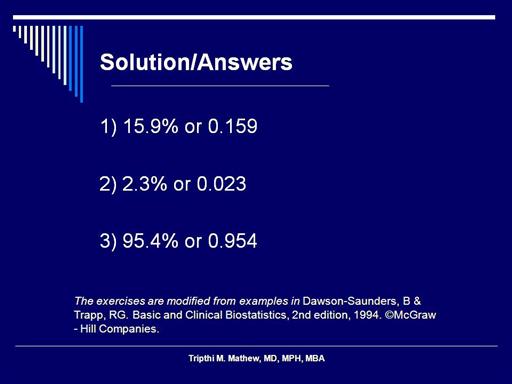| front |1 |2 |3 |4 |5 |6 |7 |8 |9 |10 |11 |12 |13 |14 |15 |16 |17 |18 |19 |20 |21 |22 |23 |24 |25 |26 |27 |28 |29 |review |
 |
Calculation of the problems and Interpretation of results:
1)
For calculation of exercise # 1 see earlier slide. The result of
exercise # 1 is 15.9%. This means that 15.9% of normal healthy
individuals have a heart rate above one standard deviation (greater than
80 beats per minute).
2) Calculation for exercise #2 Z = X- μ z = 90-70 = 20/10 = 2.00. If we look at the normal distribution tables, then the z value of 2.00 corresponds to 0.023 or 2.3% σ 10 This means that 2.3% of normal healthy individuals have a heart rate above two standard deviation (greater than 90 beats per minute).
3) Calculation for exercise # 3 Z = X- μ Z1 = 50-70 = -20/10 = -2.00 and Z2= 90-70/10 =2.00. The area between -2 standard deviations and +2 standard deviations from σ 10 The z tables is 0.954 or 95.4%. This means that 95.4% have a heart rate between -2 and +2 standard deviations (between 50 -90 beats per minute). |